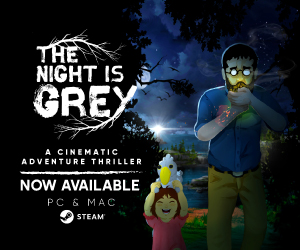Review for The Case of the Golden Idol

The Case of the Golden Idol inspires conflicting reflections. On the one hand, the gameplay and problem-solving do effectively challenge the player’s reasoning skills. On the other hand, the story midway through becomes unfocused and the presentation weak.
Developed by Color Gray Games, the plot centers around an 18th century family, the Cloudsleys, and the mysterious golden idol which contains magical abilities. The narrative branches out, confirming the existence of an Illuminati-like cult with religious and political influences, as well as a main villain whose ideals make him drunk with power. The twist is that the players are not involved in the story. Rather, they are witnessing the aftermath of the events that have previously occurred and are piecing together what exactly happened. This makes the game less of a crime-solving mystery and more of a historical investigation, observing key moments through a time machine or crystal ball. It is a unique approach compared to a standard crime-solver where the player is a detective directly participating in the ongoing events.
As exciting as it all sounds, the narrative loses focus over time and feels segmented. It does hook players in with the enigmatic -- and sometimes bizarre -- individual scenarios: for instance, with the seemingly inexplicable deaths of certain individuals or even a character catching fire. There’s a lot of clue-finding and the focus is on environmental storytelling, with additional bits and pieces of the story told through correspondence or books. Midway through, however, the tale becomes hard to follow and the scenarios feel like they are happening so far apart from each other in the timeline that they do not make a lot of sense. Ultimately, not even the newspapers and letters in the later levels sufficiently reveal how the plot elements fit together. There are cutscenes, but they are few and far between and do not add a lot of substance. Some players may figure out the story through extremely careful observation, but the epilogue is what actually reveals everything. Honestly, large portions of this epilogue would have been much more compelling and sensible if integrated at the midway point so that the story flowed more smoothly and rationally. It also does not help that the reoccurring characters are just there to supply clues and have little to no personality development or investment, especially with players functioning as outside spectators. There is a story in there, but the execution is not handled well.
What really elevates and carries The Case of the Golden Idol most of the way is the gameplay. As mentioned before, players will be taken into the aftermath of each scenario, tasked to make sense of what occurred. There are two pillars: exploring and thinking. Exploring has you looking around the level and clicking on various objects to gain a collection of text boxes. These are to be used in the thinking tab, which takes the form of a journal where you piece together who the current characters are and reconstruct what exactly took place. These levels get subsequently harder and challenge your perception of what really happened. This makes players rethink initial assumptions and sometimes go AHA when realizing what it is they got wrong the first time around. These are moments that really test your deduction skills.
However, it is not a perfect system. With the player being a spectator and the flaws of the story implementation, progressing through the game stops feeling like solving a real mystery. Rather, players may catch on to the fact that they are unraveling one scenario simply to move on to the next one. This is acceptable until the last few levels, which are needlessly tedious and the clues to solve them are extremely obscure. It is worth noting that in some situations, not every clue needs to be found nor every thinking challenge solved, but it is not always evident which ones are absolutely essential or which are secondary. There is a hint system, but you must solve a minigame in order to use it. You are encouraged to avoid hints and make deductions on your own.
The presentation, overall, is adequate. The music gives an 18th century classical ambiance, appropriate for the situations presented. However, it consists mostly of the same few string and piano tracks with little variation when traversing the environments. There are hardly any sound effects, which are only present in the handful of cutscenes, and no voice acting. Finally, the graphics look disappointingly dated. The pixel art does give detailed backgrounds and uses color palettes that feel like something out of the eighties, which will appeal to old-school players. There are modern games that have used pixel art creatively, but this game’s rough and flat design means that the graphics fall short. Also, the characters look either bland at best or unappealing at worst, especially the blocky, up-close portraits. Not to mention that in every scenario, each character is looped into a single animation, a couple of which are far more hilarious than they should be.
The Case of the Golden Idol is a game that makes it hard to come up with a fair quality rating. The process of solving the cases of individual multiple scenarios can be an enjoyable challenge and brings players genuine moments of satisfaction when rethinking their initial interpretation of events and clues. Yet the story eventually becomes overly complicated and exasperating, as does the gameplay to a certain extent. With the increasing difficulty, while avoiding use of the hint system, it took over ten hours to complete. If players can look past these downsides, this game will appeal to those seeking an unusual brain-twisting adventure that focuses on environmental storytelling and rewards deduction.

























